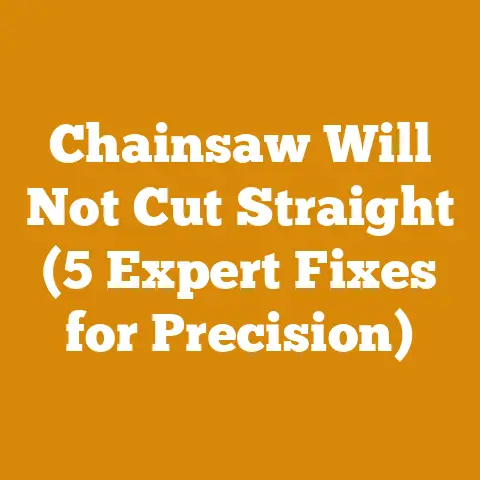Cut Tree Stumps Cleanup (5 Pro Tips for Smooth Chainsaw Cuts)
Stumped by Stumps? Conquer Them with Chainsaw Mastery and Smart Budgeting!
I’ve faced my fair share of stubborn stumps in my years of working with wood. They’re the unwelcome leftovers of tree felling, and getting rid of them cleanly and efficiently is crucial for land clearing, landscaping, or even just creating a safer backyard. But let’s be honest, hacking away at a stump can be a back-breaking, time-consuming, and potentially dangerous task if you don’t know what you’re doing. And of course, there’s the cost factor to consider – from the chainsaw itself to fuel and maintenance.
5 Pro Tips for Smooth Chainsaw Stump Cuts
Before we even think about costs, let’s talk technique. A clean, smooth cut makes subsequent stump removal (whether by grinding, digging, or chemical treatment) significantly easier. These are the five tips I’ve learned over the years that make a world of difference:
-
Preparation is Key:
- Clear the Area: This seems obvious, but it’s critical. Remove all rocks, debris, and loose soil from around the stump. These can damage your chain and even cause kickback. I once ruined a perfectly good chain by hitting a hidden piece of metal buried near a stump – a costly mistake I won’t repeat!
- Expose the Root Collar: Dig around the stump to expose the root collar, the area where the trunk transitions into the roots. This will allow you to make cuts closer to the ground, minimizing the remaining stump. I usually aim to expose at least 6-8 inches of the root collar.
- Sharpen Your Chain: A dull chain is a dangerous chain. It requires more force, increases the risk of kickback, and produces rough, uneven cuts. Sharpen your chain before each stump-cutting session. I personally prefer using a chainsaw sharpening kit with a file guide for consistent results.
-
Plan Your Cuts:
- Assess the Stump: Before you start cutting, take a moment to assess the stump’s size, shape, and the direction of the roots. This will help you plan the most efficient and safe cutting strategy.
- Notch the Stump: Create a notch on the side of the stump you want to fell it towards (if you’re felling a smaller portion of the stump). This helps control the direction of the fall and prevents the chainsaw from binding. I usually make a notch that’s about one-third of the stump’s diameter.
- Consider Wedges: For larger stumps, consider using felling wedges to prevent the saw from pinching and to help direct the fall. I’ve found that plastic wedges are less likely to damage my chain than metal ones.
-
Master the Plunge Cut:
- Controlled Entry: The plunge cut is essential for cutting through the center of the stump without pinching the saw. Start with the tip of the bar against the wood, then slowly pivot the saw into the stump.
- Maintain a Steady Pace: Avoid forcing the saw. Let the chain do the work. Maintain a steady, controlled pace, and be mindful of the saw’s movement.
- Watch for Kickback: Be extra cautious when performing plunge cuts, as they can increase the risk of kickback. Keep a firm grip on the saw and maintain a stable stance.
-
Use Proper Cutting Techniques:
- Avoid Pinching: Pinching occurs when the wood closes in on the saw blade, trapping it. To prevent pinching, use wedges, make relief cuts, and avoid cutting in areas where the wood is under tension.
- Keep the Chain Oiled: Proper chain lubrication is crucial for smooth cutting and extending the life of your chain and bar. Check the oil level frequently and refill as needed. I’ve found that using a high-quality bar and chain oil makes a noticeable difference.
- Take Breaks: Stump cutting can be physically demanding. Take frequent breaks to avoid fatigue, which can increase the risk of accidents.
-
Safety First!
- Wear Protective Gear: Always wear appropriate safety gear, including safety glasses, hearing protection, gloves, chainsaw chaps, and sturdy boots. I never start my chainsaw without all of my gear in place.
- Maintain a Safe Distance: Keep bystanders and pets away from the work area.
- Be Aware of Your Surroundings: Pay attention to your surroundings, including overhead hazards, uneven terrain, and potential obstacles.
- Know Your Limits: Don’t attempt to cut stumps that are beyond your skill level or the capabilities of your chainsaw.
Decoding the Costs: A Chainsaw Stump Removal Budget Breakdown
Now that we’ve covered the essential cutting techniques, let’s dive into the nitty-gritty of budgeting for stump removal. The costs can vary significantly depending on several factors, including the size and species of the stump, the accessibility of the location, and whether you’re doing the work yourself or hiring a professional.
A. Initial Investment: The Chainsaw Itself
This is the most significant upfront cost. Chainsaws range in price from a few hundred dollars for a basic electric model to several thousand for a professional-grade gas-powered saw.
- Electric Chainsaws: These are generally less expensive and easier to maintain than gas-powered saws. They’re ideal for smaller stumps and occasional use. You can typically find a decent electric chainsaw for around \$100 – \$300. However, keep in mind that you’ll also need to factor in the cost of an extension cord, which can range from \$20 – \$50 depending on the length and gauge. I used an electric chainsaw for years when I lived in a smaller property, and it was perfect for small jobs.
- Gas-Powered Chainsaws: These are more powerful and versatile than electric saws, making them better suited for larger stumps and more demanding tasks. Gas-powered chainsaws can range in price from \$200 for a basic homeowner model to \$1,000 or more for a professional-grade saw. I highly recommend investing in a reliable brand like Stihl, Husqvarna, or Echo. While they might be more expensive upfront, they’ll last longer and perform better in the long run.
- Battery-Powered Chainsaws: These offer a compromise between the convenience of electric saws and the power of gas-powered saws. Battery-powered chainsaws are becoming increasingly popular, and their performance is constantly improving. You can expect to pay around \$300 – \$600 for a good quality battery-powered chainsaw, including the battery and charger. One thing to consider is the battery life, especially if you’re tackling a large stump.
Data Point: According to a recent survey by Arbor Age magazine, the average price of a professional-grade gas-powered chainsaw is around \$800 – \$1,200.
B. Ongoing Expenses: Fuel, Oil, and Maintenance
The costs don’t stop with the initial purchase. You’ll also need to factor in the ongoing expenses of fuel, oil, and maintenance.
- Fuel: If you’re using a gas-powered chainsaw, you’ll need to purchase fuel. The cost of fuel can vary depending on the price of gasoline in your area. I typically use a premium fuel blend with added stabilizers to help prolong the life of my chainsaw. On average, I spend around \$20 – \$30 per month on fuel during peak stump-cutting season.
- Bar and Chain Oil: Proper chain lubrication is essential for smooth cutting and extending the life of your chain and bar. You’ll need to purchase bar and chain oil regularly. A gallon of good quality bar and chain oil typically costs around \$15 – \$25. I usually go through about a gallon of oil every two to three months.
- Chain Sharpening: A dull chain is a dangerous chain. You’ll need to sharpen your chain regularly to maintain optimal performance. You can either sharpen the chain yourself using a chainsaw sharpening kit or take it to a professional. A chainsaw sharpening kit typically costs around \$30 – \$50, while professional sharpening services can cost around \$10 – \$20 per sharpening. I prefer to sharpen my own chains because it’s more convenient and cost-effective in the long run.
- Chain Replacement: Chains eventually wear out and need to be replaced. The cost of a new chain can range from \$20 – \$50 depending on the size and type of chain. I usually replace my chains every one to two years, depending on how frequently I’m using my chainsaw.
- Bar Replacement: The chainsaw bar can also wear out over time and may need to be replaced. The cost of a new bar can range from \$30 – \$100 depending on the size and type of bar. I’ve only had to replace my bar once in the past ten years.
- Air Filter Replacement: A clean air filter is essential for maintaining optimal engine performance. You’ll need to replace the air filter regularly. Air filters typically cost around \$5 – \$10.
- Spark Plug Replacement: The spark plug also needs to be replaced periodically. Spark plugs typically cost around \$5 – \$10.
- Repairs: Unexpected repairs can also add to the cost of chainsaw ownership. I always recommend having your chainsaw serviced annually by a qualified technician to prevent major problems. A basic chainsaw service typically costs around \$50 – \$100.
C. Safety Gear: Protecting Yourself
Don’t skimp on safety gear. It’s an investment in your well-being.
- Safety Glasses: Safety glasses are essential for protecting your eyes from flying debris. A good pair of safety glasses typically costs around \$10 – \$20.
- Hearing Protection: Chainsaws are loud, and prolonged exposure to loud noise can damage your hearing. Hearing protection is a must. You can choose from earplugs or earmuffs. Earplugs typically cost around \$5 – \$10, while earmuffs can cost around \$20 – \$50.
- Gloves: Gloves protect your hands from cuts, abrasions, and vibrations. A good pair of chainsaw gloves typically costs around \$20 – \$40.
- Chainsaw Chaps: Chainsaw chaps are designed to protect your legs from chainsaw cuts. They’re an essential piece of safety gear, especially for beginners. Chainsaw chaps typically cost around \$80 – \$150.
- Sturdy Boots: Sturdy boots provide ankle support and protect your feet from injury. I always wear steel-toed boots when operating a chainsaw. A good pair of work boots typically costs around \$80 – \$200.
- Helmet: While not always necessary for small stump removal projects, a helmet is recommended, especially if you’re working in an area with overhead hazards. A chainsaw helmet with a face shield and hearing protection typically costs around \$50 – \$100.
D. Stump Removal Method Costs (Beyond the Cut)
The chainsaw work is just the beginning. What you do after cutting the stump significantly impacts the overall cost.
- Grinding: Stump grinding is a popular method for removing stumps completely. It involves using a specialized machine called a stump grinder to grind the stump down into small chips. Stump grinding can be expensive, especially if you hire a professional. The cost of stump grinding typically ranges from \$2 to \$5 per diameter inch, or \$100 to \$400 per stump. Renting a stump grinder can be a more cost-effective option if you’re comfortable operating the machine yourself. Stump grinder rentals typically cost around \$100 – \$200 per day.
- Digging: Digging out a stump is a labor-intensive process, but it can be a cost-effective option if you’re willing to put in the work. You’ll need a shovel, pickaxe, and possibly a digging bar. Digging out a large stump can take several hours or even days. The cost of digging out a stump is primarily the cost of your time and effort. I’ve dug out a few smaller stumps myself, and it’s definitely a workout!
- Chemical Treatment: Chemical treatment involves using herbicides to kill the stump and accelerate its decomposition. This method is relatively inexpensive, but it can take several months or even years for the stump to decompose completely. Herbicides typically cost around \$20 – \$50 per bottle.
- Burning: Burning a stump is another option, but it’s not always feasible due to local regulations and safety concerns. Burning a stump can also be a slow and smoky process. The cost of burning a stump is primarily the cost of the fuel you use to keep the fire going. I wouldn’t recommend this method unless you have a large, open area and are comfortable with fire safety.
E. Professional Stump Removal Services
Hiring a professional stump removal service can save you time and effort, but it will also add to the cost. The cost of professional stump removal services can vary depending on the size and location of the stump, as well as the method used.
- Estimates: Always get multiple estimates from different companies before hiring a professional.
- Factors Affecting Price: The cost of professional stump removal services can be affected by factors such as the size and location of the stump, the type of soil, and the presence of underground utilities.
- Average Costs: On average, professional stump removal services cost around \$150 – \$500 per stump.
Data Point: According to HomeAdvisor, the national average cost for stump removal is around \$325.
Case Study: My Stump Removal Project Budget
To illustrate how these costs can add up, let’s look at a recent stump removal project I undertook. I had three medium-sized oak stumps in my backyard that I wanted to remove. Here’s a breakdown of my costs:
- Chainsaw (already owned): \$0 (but let’s amortize the cost: \$50/year)
- Fuel: \$10
- Bar and Chain Oil: \$5
- Chain Sharpening (DIY): \$0 (using my existing kit)
- Safety Gear (already owned): \$0
- Stump Grinder Rental (half-day): \$100
- Disposal Fees (wood chips): \$20
Total Cost: \$185 (plus \$50 amortization for the chainsaw)
If I had hired a professional, the cost would have likely been closer to \$600 – \$900. Renting the stump grinder and doing the work myself saved me a significant amount of money. However, it did require a full day of hard labor.
Taming the Budget Beast: Cost Optimization Strategies
Now that we’ve broken down the costs, let’s explore some strategies for keeping your stump removal budget under control:
- Do it Yourself (DIY): This is the most obvious way to save money. If you’re comfortable operating a chainsaw and other power tools, you can tackle the stump removal project yourself.
- Rent Equipment: Renting equipment like stump grinders and excavators can be a more cost-effective option than hiring a professional, especially if you have multiple stumps to remove.
- Consider Alternative Removal Methods: Digging out stumps or using chemical treatments can be less expensive than grinding or hiring a professional.
- Shop Around for the Best Prices: Compare prices on equipment rentals, supplies, and professional services before making any decisions.
- Negotiate Prices: Don’t be afraid to negotiate prices with rental companies and contractors.
- Timing is Everything: Sometimes, you can get better deals on equipment rentals or professional services during the off-season.
- Proper Maintenance: Regular maintenance of your chainsaw and other equipment can help prevent costly repairs and extend their lifespan.
- Safety First (Again!): Preventing accidents is crucial for keeping your costs down. A trip to the emergency room can quickly wipe out any savings you’ve achieved.
Formulas and Calculations for the Woodworker’s Wallet
Here are a few useful formulas and calculations that can help you estimate costs and plan your stump removal project:
- Stump Volume (Cylindrical Approximation): V = πr²h, where V is the volume, r is the radius of the stump, and h is the height of the stump. This can help you estimate the amount of wood you’ll need to dispose of.
- Stump Grinding Cost Estimation: Cost = Diameter (inches) x Price per Inch. This is a simple way to estimate the cost of professional stump grinding services.
- Fuel Consumption: Fuel Consumption = (Engine Horsepower x Load Factor x Specific Fuel Consumption) / Fuel Energy Content. This formula can help you estimate how much fuel your chainsaw will consume during the project.
Data Point: According to the U.S. Energy Information Administration (EIA), the average retail price of gasoline in the United States is currently around \$3.50 per gallon.
Global Timber Prices and Equipment Rental Rates: A Quick Look
It’s important to remember that timber prices and equipment rental rates can vary significantly depending on your location. Here’s a quick overview of global trends:
- Timber Prices: Timber prices are influenced by factors such as supply and demand, transportation costs, and government regulations. In general, timber prices tend to be higher in developed countries than in developing countries.
- Equipment Rental Rates: Equipment rental rates are influenced by factors such as the type of equipment, the rental duration, and the location. In general, equipment rental rates tend to be higher in urban areas than in rural areas.
You can find information on timber prices and equipment rental rates from various sources, including government agencies, industry associations, and online marketplaces.
Actionable Takeaways and Next Steps
So, you’ve made it through the stump removal gauntlet! Here are some actionable takeaways and next steps to help you get started:
- Assess Your Needs: Determine the size and number of stumps you need to remove, as well as your budget and skill level.
- Choose the Right Tools: Select the right chainsaw and other equipment for the job.
- Plan Your Project: Develop a detailed plan that includes safety precautions, cutting techniques, and disposal methods.
- Get Estimates: Obtain estimates from rental companies and contractors.
- Start Cutting (Safely!): Follow the safety guidelines and cutting techniques outlined in this article.
- Dispose of the Debris: Properly dispose of the wood chips and other debris.
- Enjoy Your Stump-Free Yard!
The Woodworker’s Wisdom: A Final Thought
Removing tree stumps can be a challenging but rewarding task. By following the tips and strategies outlined in this article, you can conquer those stubborn stumps, save money, and create a safer and more beautiful outdoor space. Remember, safety is always the top priority. Take your time, be careful, and enjoy the process. And don’t be afraid to ask for help if you need it. There’s a whole community of woodworkers and arborists out there who are happy to share their knowledge and experience. Now go forth and conquer those stumps!






